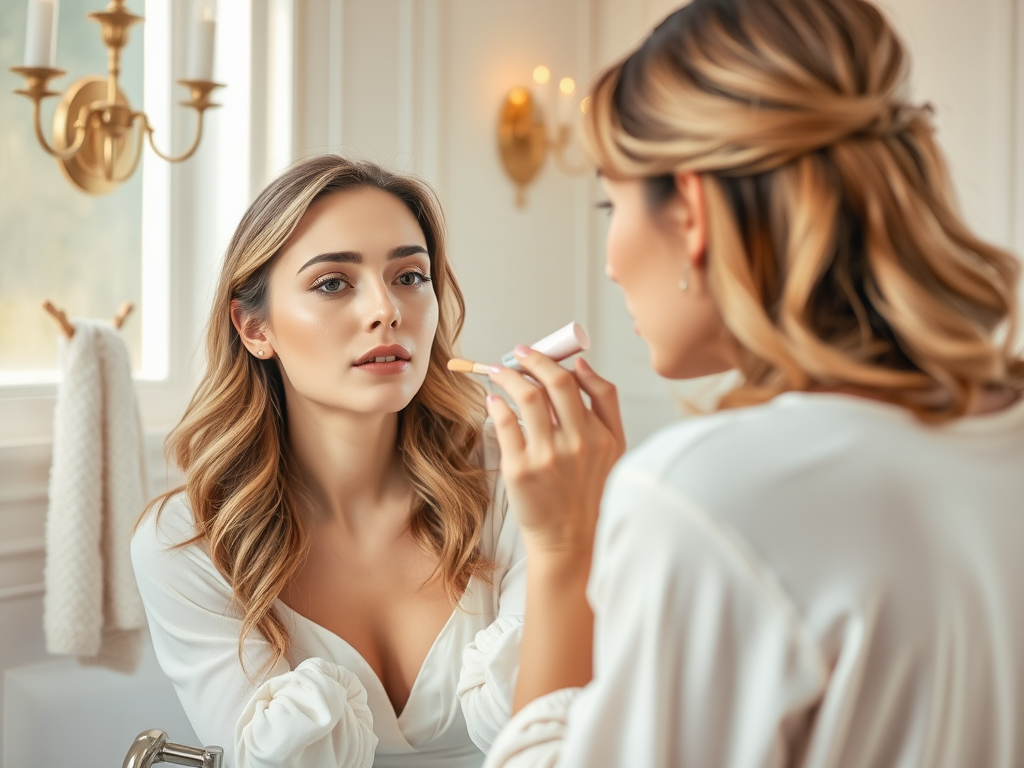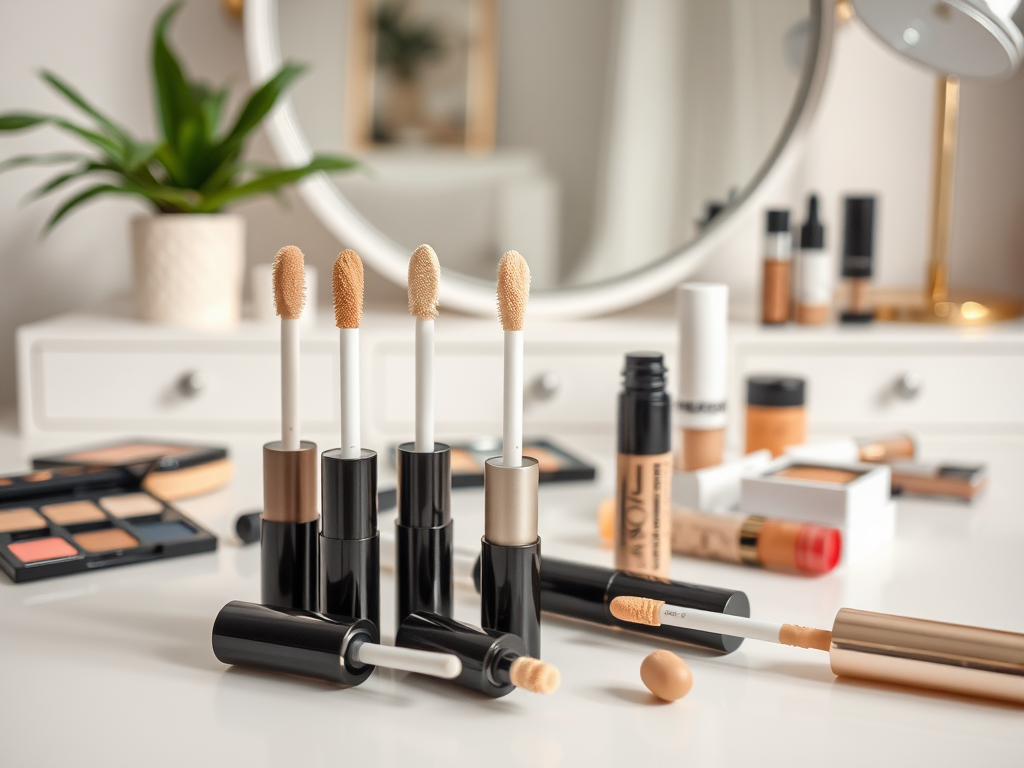
How to Apply Concealer on Blemishes Effectively
In a world where flawless skin is often idolized, blemishes can feel like a blemish on our confidence. Whether it’s an unexpected pimple before an important event or a lingering scar from past acne, knowing how to effectively apply concealer can be your secret weapon to a luminous complexion. This guide not only helps in covering blemishes but also empowers you with the techniques that enhance your natural beauty. Mastering the art of concealment allows you to feel confident and radiant, no matter what your skin’s story is. Dive into our comprehensive approach and discover the secrets to achieving that smooth, polished look you’ve always wanted.
Effective concealing starts with understanding your blemishes and the products designed to cover them. With the right tactics and products, you can elevate your makeup game significantly. The aim is to seamlessly blend your concealer while ensuring that your skin remains protected and cared for underneath. From preparing your skin beforehand to selecting the ideal products, the entire process is as much about technique as it is about products. Therefore, let’s unravel the essential steps in this transformative journey!
Understanding Blemishes and Their Causes

Blemishes can take many forms, ranging from the commonly seen acne marks to pigmentation spots caused by sun damage. Understanding what causes these imperfections is crucial in choosing the correct approach for coverage. For instance, knowing whether your blemish is acute or caused by chronic conditions can dictate your choice of concealer. With various blemish types, treatments vary, and your skincare routine should be tailored accordingly. Here’s a breakdown of common blemish types that might require covering:
- Acne: This includes pimples, cysts, and blackheads that often crop up unexpectedly.
- Dark Spots: Commonly known as hyperpigmentation, these spots usually arise from sun exposure or hormonal actions.
- Redness: Often a result of sensitivity or irritation, redness can occur after using certain products or due to skin conditions.
Choosing the Right Concealer

Not all concealers work for every skin type or blemish. Therefore, understanding the type and texture of the concealer is fundamental. Here’s a guide to different types of concealers you might consider for various needs:
| Type of Concealer | Finish | Best For |
|---|---|---|
| Liquid Concealers | Sheer to medium | Light coverage and blending |
| Cream Concealers | Full | Stubborn blemishes |
| Stick Concealers | Variable | On-the-go touch-ups |
Choosing the right shade is equally important. A poorly matched concealer can draw more attention to your blemishes instead of hiding them. Here are some tips to help you pick the right shade:
- Match Your Skin Tone: Always test shades in natural light to see how they blend with your skin.
- Consider Undertones: Look for shades that complement your skin’s underlying tones, whether they be cool, warm, or neutral.
Preparing Your Skin for Concealer
Once you’ve selected your concealer, it’s time to prepare your skin and create the perfect canvas. This step is crucial as it ensures that the concealer adheres properly and provides a smooth finish. Begin with cleansing your face to remove any dirt, oil, or residual makeup from the previous day. A gentle cleanser is preferable to prevent irritation, especially if you have sensitive skin. After cleansing, apply a lightweight, oil-free moisturizer to hydrate your skin without clogging your pores.
Applying a primer can also significantly enhance the performance of your concealer. A makeup primer forms an even layer, providing a better grip for the concealer, thus prolonging its wear. Primers designed for your specific skin type can control oil, texture, and more. Now that your skin is prepped, you are ready to embark on the actual application process.
The Application Process
It’s time to break down the application process into digestible steps that lead to the best results. Begin by gathering your tools. A clean makeup sponge or your fingertips can give a more natural effect, whereas a concealer brush will provide precision in your application. Remember, this is where craftsmanship meets artistry; take your time and follow these steps for effective coverage.
- Dab the Concealer: Lightly apply the concealer directly onto the blemish using your chosen tool.
- Blend Gently: Use tapping motions to ensure that the edges blend seamlessly into your skin.
- Build Coverage: Apply additional layers as necessary, allowing each to dry before applying more.
Setting the Concealer
Setting your concealer is a final yet vital step to ensure it remains in place throughout the day. Setting powder can prevent creasing or fading, maintaining your flawless look. When choosing the right setting powder, consider translucent powder as a versatile option that suits all skin tones.
Here are the recommended techniques for application:
- Lightly Dust: Use a fluffy brush to apply powder over the concealed areas, focusing on specific zones where you need it most.
- Avoid Overdoing It: Remember that less is more; too much powder can lead to a cakey appearance.
Conclusion
Applying concealer to blemishes is an art that, when mastered, can genuinely enhance your self-confidence. By carefully selecting the right products, preparing your skin, and following a systematic application process, you can achieve a flawless finish that conceals without feeling heavy. Remember, the goal is to let your natural beauty shine through, and with these techniques, you’re more than equipped to face the world head-on.
Frequently Asked Questions
- How do I choose the right shade of concealer for my skin? – Test several shades in natural light and consider your skin’s undertone (cool, warm, neutral).
- Can I use concealer on other types of skin imperfections? – Yes, concealer can be used on dark circles, redness, and even freckles if desired.
- What if my blemishes become more visible after applying concealer? – Ensure you’re using a proper setting powder and avoid over-applying the concealer, which can cause it to cake.
- Should I apply concealer before or after foundation? – If you have significant blemishes, it’s often best to apply concealer after foundation for better coverage.
- Is there any way to treat blemishes while covering them? – Look for concealers that contain skin treatment ingredients like salicylic acid or tea tree oil for dual action.
Reading time 7 minutesIn a world where flawless skin is often idolized, blemishes can feel like a blemish on our confidence. Whether it’s an unexpected pimple before an important event or a lingering scar from past acne, knowing how to effectively apply concealer can be your secret weapon to a luminous complexion. This guide not only…